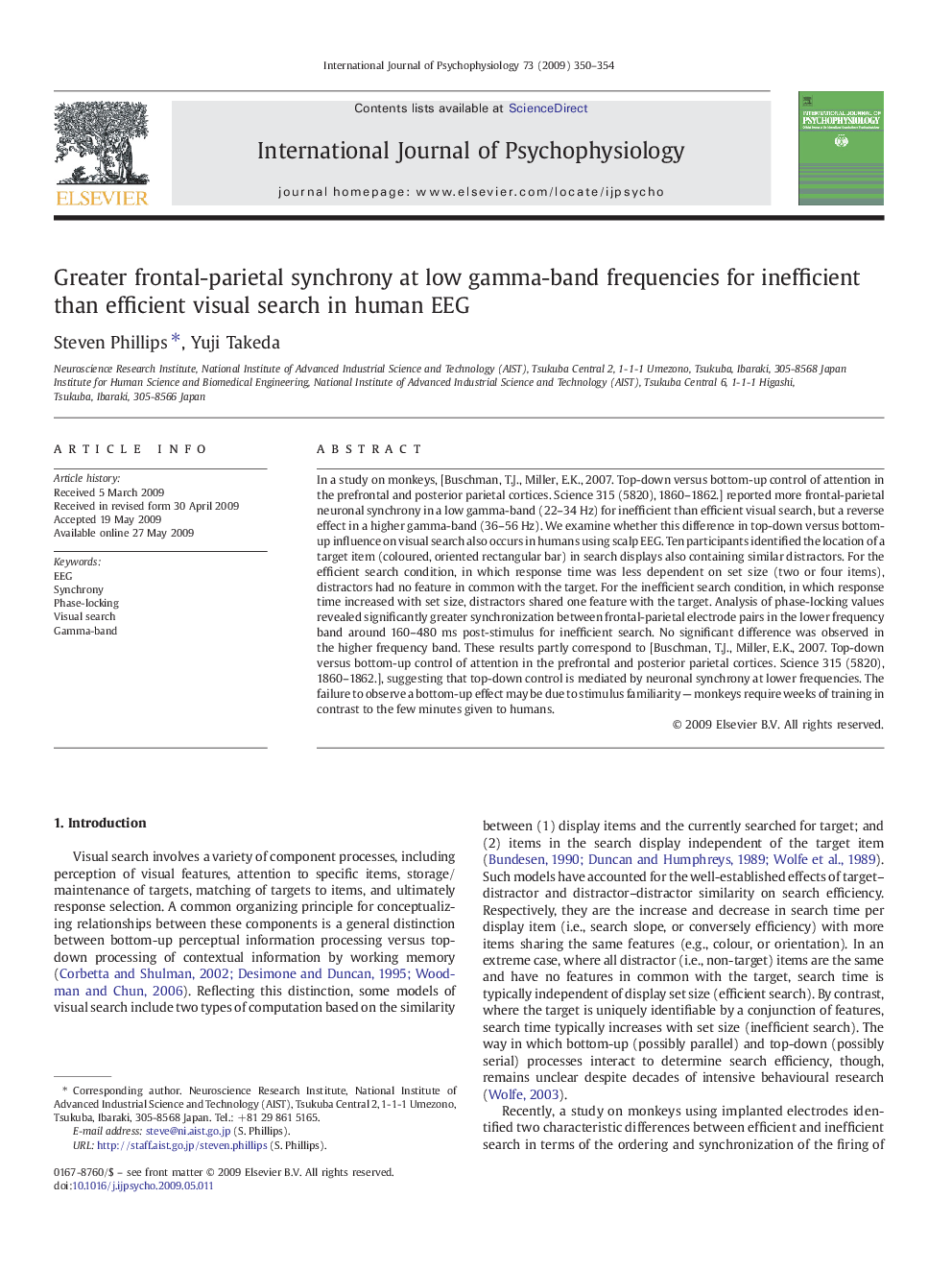| کد مقاله | کد نشریه | سال انتشار | مقاله انگلیسی | نسخه تمام متن |
|---|---|---|---|---|
| 7296489 | 1474475 | 2009 | 5 صفحه PDF | دانلود رایگان |
عنوان انگلیسی مقاله ISI
Greater frontal-parietal synchrony at low gamma-band frequencies for inefficient than efficient visual search in human EEG
دانلود مقاله + سفارش ترجمه
دانلود مقاله ISI انگلیسی
رایگان برای ایرانیان
کلمات کلیدی
موضوعات مرتبط
علوم زیستی و بیوفناوری
علم عصب شناسی
علوم اعصاب رفتاری
پیش نمایش صفحه اول مقاله

چکیده انگلیسی
In a study on monkeys, [Buschman, T.J., Miller, E.K., 2007. Top-down versus bottom-up control of attention in the prefrontal and posterior parietal cortices. Science 315 (5820), 1860-1862.] reported more frontal-parietal neuronal synchrony in a low gamma-band (22-34Â Hz) for inefficient than efficient visual search, but a reverse effect in a higher gamma-band (36-56Â Hz). We examine whether this difference in top-down versus bottom-up influence on visual search also occurs in humans using scalp EEG. Ten participants identified the location of a target item (coloured, oriented rectangular bar) in search displays also containing similar distractors. For the efficient search condition, in which response time was less dependent on set size (two or four items), distractors had no feature in common with the target. For the inefficient search condition, in which response time increased with set size, distractors shared one feature with the target. Analysis of phase-locking values revealed significantly greater synchronization between frontal-parietal electrode pairs in the lower frequency band around 160-480Â ms post-stimulus for inefficient search. No significant difference was observed in the higher frequency band. These results partly correspond to [Buschman, T.J., Miller, E.K., 2007. Top-down versus bottom-up control of attention in the prefrontal and posterior parietal cortices. Science 315 (5820), 1860-1862.], suggesting that top-down control is mediated by neuronal synchrony at lower frequencies. The failure to observe a bottom-up effect may be due to stimulus familiarity - monkeys require weeks of training in contrast to the few minutes given to humans.
ناشر
Database: Elsevier - ScienceDirect (ساینس دایرکت)
Journal: International Journal of Psychophysiology - Volume 73, Issue 3, September 2009, Pages 350-354
Journal: International Journal of Psychophysiology - Volume 73, Issue 3, September 2009, Pages 350-354
نویسندگان
Steven Phillips, Yuji Takeda,